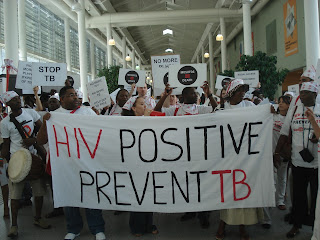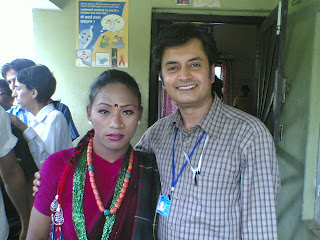‘A marriage that made in hell’
'An old disease (TB) takes on a new partner’
‘When a virus (HIV) and bacteria (TB) can work so well together – why can’t we?’
It is so nice to see that TB/HIV has been given due importance, focus and limelight in the recently observed International AIDS Conference in Vienna. There were several oral sessions and poster presentation in the conference to share research, clinical and programmatic experiences on combined TB/HIV interventions across the world, chiefly from Africa. The conference has given us opportunity to know about the key lessons learned from the TB/HIV collaborative activities in the countries though it is also felt that the experiences of Asia could have been highlighted more.
I have listed down the key areas, concepts, recommendations discussed in the TB/HIV sessions of the conference which might sound interesting to the members of this forum.
1) From TB/HIV collaboration to TB/HIV integration: Experiences from rural Lesotho and South Africa demonstrated that TB/HIV services can be integrated at the primary healthcare level through 'one stop TB/HIV service' (one clinic, one doctor, one counselor, one nurse, one patient folder, one administration for the patients with two diseases). This approach is found to be more effective than the traditional TB/HIV collaborative approach mainly in the form of cross referrals, follow up and co-infection management from two different service delivery points
2) Improving TB screening in PLHIV: In 2008 only 4% of the PLHIV globally were screened for TB. This area definitely needs urgent attention. Some country level experiences informed us that TB screening in PLHIV is a real challenge for them. Early TB case detection in PLHIV is strongly encouraged.
3) Provision of HIV services within the TB set ups: Provision of HIV services within the TB set ups like safe sex and condom promotion, STI screening and treatment, HIV counseling and testing, CPT to TB patients co-infected by HIV
4) Provision of TB services in HIV set ups: IPT at the level of VCT, TB screening of the clients of the STI clinics, sputum collection and transportation from HIV sites to TB sites
Others: (comments, suggestions, recommendations, promising practices reflected in the presentations of the conference)
- Integrating TB management in HBC program of the PLHIV
- Involving PLHIV networks in the TB related activities including their capacity building and advocacy for better TB tools
- IPT to all PLHIV irrespective of CD4 count status according to new WHO guidelines which is safe and works
- Early initiation of ART to prevent progression to active TB in PLHIV
- TB friendly ART regimen for the national ART policy
- Scaling up of integrated ART, CPT and TB services
- Funding opportunities for community groups for scaling up TB/HIV interventions
- Community involvement in the management of HIV infected TB patients
- Treatment literacy program to promote adherence and community information on TB/HIV
- Defaulter prevention program for TB/HIV
- Mobile clinics on TB/HIV activities at community level (VCT for TB affected population, TB/HIV counseling at the community level, sputum collection of the suspected cases from the ongoing HIV projects and their transportation)
- Joint monitoring of the TB/HIV program
- Infection control is crucial regardless of integration
One of the auspicious events of the conference was signing of the MoU between Stop TB Secretariat and UNAID Executive Director. The MoU should be helpful to ensure assistance and participation of the Civil Society Organizations globally in much greater numbers in the TB/HIV control and care programs.
Let's wait and watch.
Sugata Mukhopadhyay
UNIVERSAL Health








